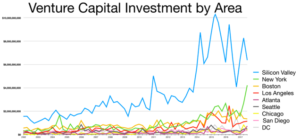
Figure 1: A visual representation of a blockchain transaction
Source: Wikimedia Commons
Blockchain is a specific type of database that serves as a digital record of monetary and non-monetary transactions. The blockchain system enables transactions through peer-to-peer (P2P) networks in the absence of mediating organizations, and it stores data in a highly secure framework known as a distributed ledger. Since data in this distributed ledger is decentralized, meaning that it is modified and recorded by several individuals concurrently, blockchain systems tend to ensure transparency and tractability in data transfer (Chang et. al., 2019; Kuo et. al., 2017). Blockchain technology has potential applications for COVID-19 as a way to enable efficient monitoring of vaccine distribution, certify transparency in supply operations, and ensure payments.
A blockchain consists of a serial ordered list of transactions with encrypted signatures that are shared by all members in the platform, just like a set of transactions written within a physical record book. There are three fundamental functions in the system: data block, distributed ledger, and the consensus algorithm (Marbouh et. al., 2020). A block is like a page in the record book, with the genesis block being the first page. The serial ordered list is updated between blocks, from the genesis to the current block (Zheng et. al., 2017; cited in Marbouh et. al., 2020). The list is linked through a hash label that creates a secure chain (Zheng et. al., 2017; cited in Marbouh et. al., 2020). A hash is just like a password in a file.
The record-keeping body in blockchain, known as the distributed ledger, features an alteration-resistant cryptographic signature for each transaction. This cryptographic signature is shared across the network in real time, which enables security of transactions since block data cannot be modified as all blocks following it would have to be changed as well. Lastly, a decentralizing mechanism known as the consensus algorithm allows all entities to exert equal control over the transaction process by ensuring that entities agree on validations for each block (Zheng et. al., 2017; cited in Marbouh et. al., 2020). All transactions can be done from point A to point B, but the transaction of both parties is seen by all users of the system. Transactions are validated only if the transactions meet the requirements of the whole system.
Diverse industries such as manufacturing, distribution, finance, and medicine have explored the utilization of blockchain. Chang and Park explore the relevance of this recently developed technology for the ongoing COVID-19 pandemic (Chang & Park, 2020). They address the operation of blockchain in fighting infectious diseases, monetary endowment, and information control. In each case, the security and efficiency of blockchain could prove helpful. Most countries adhere to a system of transaction authorization in which some final authority must provide confirmation, a process that reduces efficiency and can limit the promptness of responses to infectious diseases specifically in monitoring storage and reserve of temperature-reliant COVID-19 vaccines to provide safe patient care (Wilson, 2021). Blockchain, by contrast, eliminates the need for reporting to a final authority altogether and present a record book for all transactions for all involved. During the pandemic, immediate and simultaneous aid is necessary. With the rapid, verifiable transfer process of blockchain, such immediacy in data transfer is possible. Similarly, false information will be restrained, since alterations are difficult to perform and simple to trace in the blockchain ledger (Chang & Park, 2020).
In particular, storing clinical reports, aid transactions, and news in a blockchain has proven particularly valuable during the COVID-19 pandemic (Chang and Park, 2020). Given the increasing dependence on technology as society progresses, combined with the strong need for transparency and security especially after the challenges of the COVID-19 pandemic, the role of blockchain in everyday transactions will continue to grow.
References
Chang MC, Hsiao MY, Boudier-Reveret M. (2020). Blockchain Technology: Efficiently Managing Medical Information in the Pain Management Field. Pain Med.
Chang M.C., Park D. (2020) How Can Blockchain Help People in the Event of Pandemics Such as the COVID-19?. J Med Syst 44, 102 https://doi.org/10.1007/s10916-020-01577-8
Kuo TT, Kim HE, Ohno-Machado L. (2017). Blockchain distributed ledger technologies for biomedical and health care applications. J. Am. Med. Inform. Assoc.; 24(6):1211–1220
Marbou D, Abbasi T, Maasmi F, Omar I, Debe M, Salah K, Jayaraman R, Ellahham S. (2020). Blockchain for COVID-19: Review, Opportunities, and a Trusted Tracking System. Arabian Journal for Science and Engineering. King Fahd University of Petroleum & Minerals. https://doi.org/10.1007/s13369-020-04950-4
Wilson, T. (2021). British hospitals use blockchain to track COVID-19 vaccines. https://www.reuters.com/article/uk-health-coronavirus-blockchain/british-hospitals-use-blockchain-to-track-covid-19-vaccines-idUSKBN29O0RW
Zheng Z, Xie S, Dai H, Chen, X, Wang, H. (2019). An overview of blockchain technology: architecture, consensus, and future trends. In: IEEE 6th International Congress on Big Data, Honolulu.
Related Posts
New-clear Reactors: Newly approved nuclear reactor designs seek to improve on old ones
Figure 1: Shown by the red line, the sharp increase...
Read MoreVenture Capital Firm Based Out of Massachusetts Institute of Technology is Bringing Risky Back
Anyone can easily acknowledge the severity of major problems in...
Read MoreGeorgyn Gomez



Comments are closed.